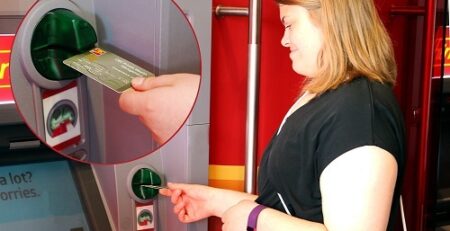How Magnusmode is building a better travel experience at Canada’s largest airport
–
The ability to criss-cross the globe by plane with both ease and speed is an engineering triumph. Bright minds have not only managed to develop the technology necessary for safe, comfortable flight, they’ve developed the international system of high-functioning, high-traffic airports that facilitate travel.
Toronto Pearson International Airport (TPIA) takes that innovation one step further. Their efforts cover international flight coordination, passenger experience, and ground-breaking accessibility for passengers with cognitive special needs.
“We service an average of 121,000 passengers every day,” says Sarah Hall, Manager of Passenger Experience at TPIA. “We want to provide every one of those passengers with an enjoyable, relaxing travel experience. We’re so excited to make that more inclusive.”
Toronto Pearson is the first airport to partner with Magnusmode. The airport has successfully implemented 10 digital, how-to guides, called Card Decks. With the help of the MagnusCards app, users can flip through the Card Decks that outline some important parts of flying from or returning to Toronto Pearson: airline check-in, boarding an airplane, Canadian border services, finding assistance, reading flight information, security screening, staying safe, American customs, navigating the airport with signs, and the expected sights, sounds and smells.
“Passenger volumes, where to go, what to do and what to expect at the airport can be overwhelming,” says Hall. “MagnusCards can make the experience more manageable through its guides and photos. People with cognitive special needs can familiarize themselves ahead of time and reduce travel stress.”
Much of that stress, for anyone moving through an airport, is rooted in the dynamic experience inherent with airports. How a passenger arrives, what airline they’re flying with, and their departure gate are just a few of the countless variables that go hand-in-hand with air travel. But Toronto Pearson has managed to account for the ever-changing nature of airports, and the uncertainty those changes can foster.
“We’re a big airport, and we’re growing fast. Building changes and airport improvements can affect how passengers use the airport,” says Hall. “Because of that dynamic nature, the MagnusCards app is a great solution. We can update and adjust it easily.”
For Toronto Pearson, those adjustments include walking through the airport to take actual photographs of airport milestones — check-in, baggage drop-off, where passengers can enjoy a meal, or where they can find a washroom.
“We wanted to build something as close to a real-life situation as possible. We’ve heard stories of parents sharing the Card Decks with their children ahead of time, so they can begin to visualize the experience of going to the airport.”
TPIA’s use of MagnusCards is just one facet of a whole host of initiatives aimed at making air travel accessible for everyone. Passengers with special needs of any kind can benefit from bright signage, porter service, braille labels, airline mobility assistance and adult change rooms, to name a few.
More than 47 million passengers move through TPIA every year. While each person arrives differently, walks a different route to their gate and is headed to a different destination, every passenger is an important part of the innovation underway in air travel.
“We’re the first airport to offer MagnusCards,” says Hall. “We’re committed to the best experience for passengers navigating our airport — MagnusCards helps empower people and support that great experience through technology.”
Flight engineering is more advanced than ever. Flight coordination is like a well-oiled machine. But making the airport experience enjoyable and accessible to all is an incredible feat.








